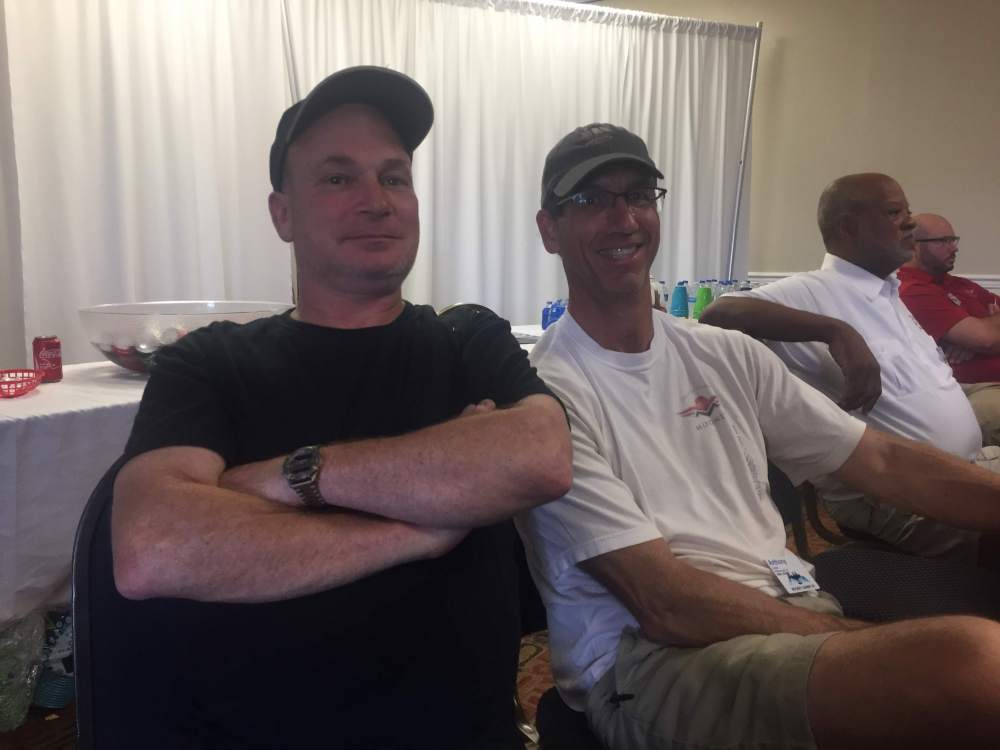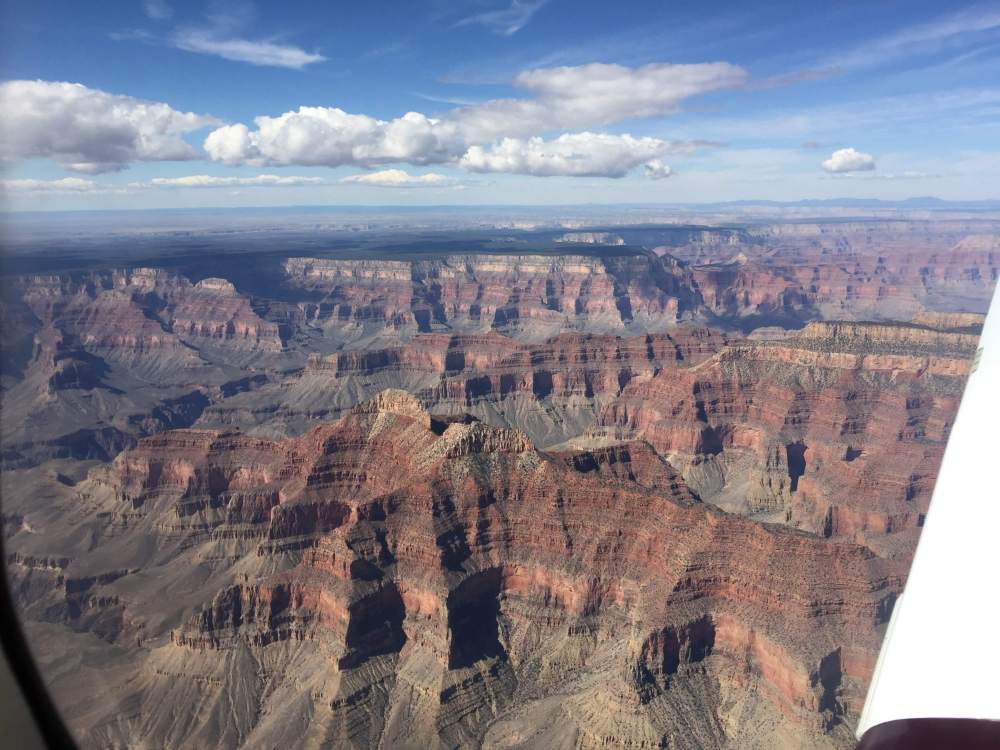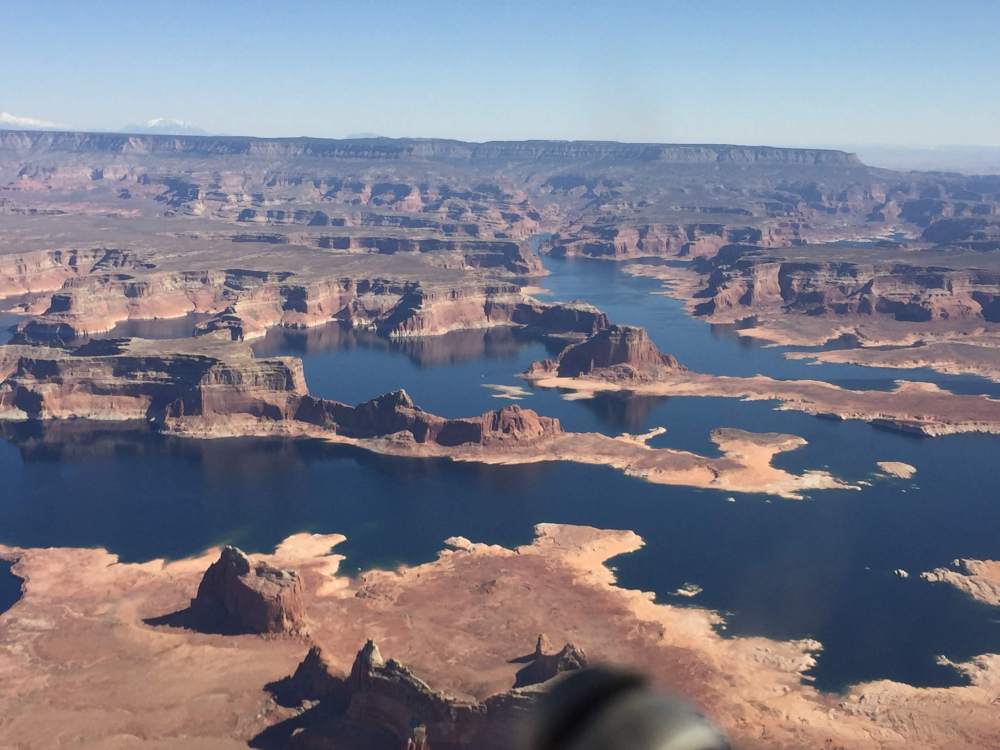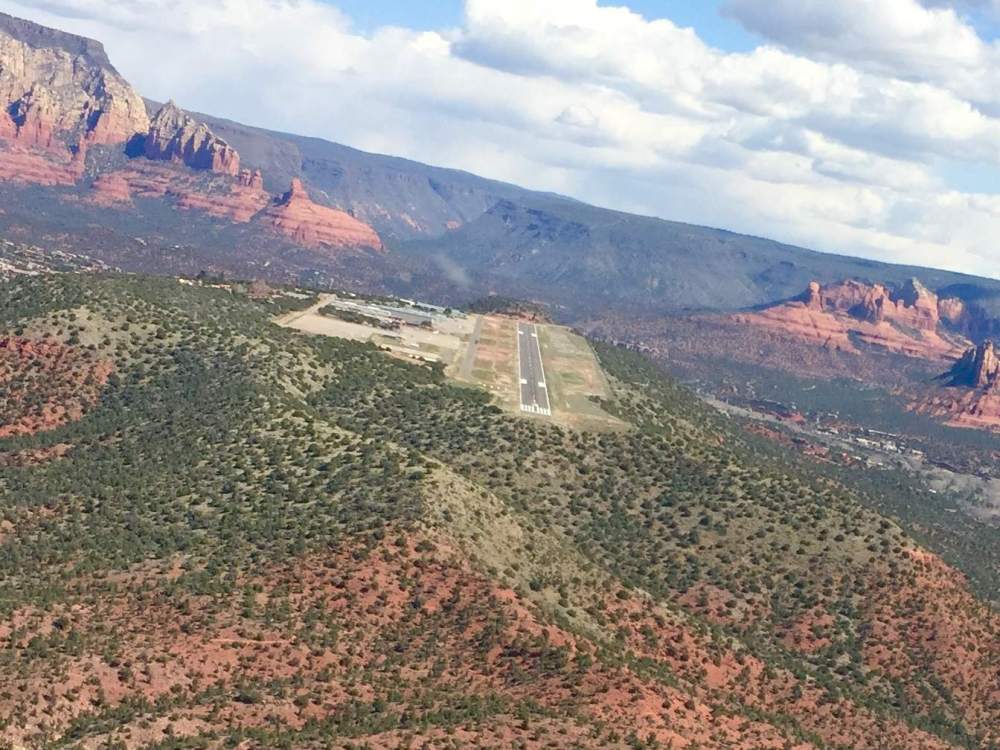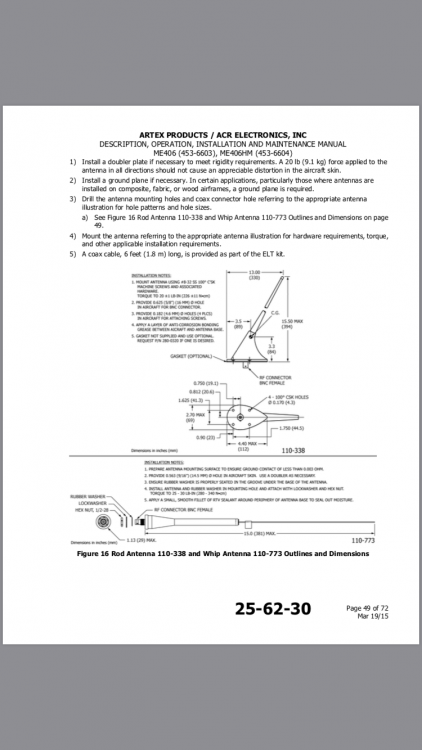
Deb
Supporter-
Posts
353 -
Joined
-
Days Won
3
Content Type
Profiles
Forums
Blogs
Gallery
Downloads
Media Demo
Events
Everything posted by Deb
-
-
garmin database alert for KOSH ILS-36 June 2019
Deb replied to tbrickey's topic in General Mooney Talk
From http://www.ifr-magazine.com/issues/33_7/features/A-Date-With-AIRAC_1248-1.html: “The AIRAC date occurs every 28 days on a Thursday. Each country determines the exact time of the switchover to coincide with low air traffic volume. In the U.S. it is 0900 Zulu or 1200 a.m. to 0400 a.m. local depending on time of year and zone.“ -
Deb (both of us)
-
Turn coordinator question for a CFII
Deb replied to Lance Link's topic in Miscellaneous Aviation Talk
Yes; it’s behind the MFD. -
Jerrod, Are you looking for a school, or just an instructor? There are options a TMB, Endeavour at KOPF (Freddie is a good guy, but we have no experience there) and there are several schools at HWO. Further north, FXE and PMP have schools. There are also instructors with planes at FXE and probably others. If we knew which airport(s) were convenient for you we could be a bit more specific. Debbie
-
From Trek Lawler (Garmin Field Service Engineering Supervisor) posted on BeechTalk 4/17/2019 https://www.beechtalk.com/forums/viewtopic.php?f=21&t=166081&start=105: Hello everyone, we just received approval on the revision 18 of the G5 install manual which updates the type design data to reintroduce shielded twisted-pair cable, MIL-C-27500 as an optional wire type for use in CAN bus installation and other minor clarifications to the STC Installation manual. we will have the new manual posted here very soon. let me know if there are any questions,
-
Some MS visitors at Spruce Creek
Deb replied to Yooper Rocketman's topic in Miscellaneous Aviation Talk
Tom (@Yooper Rocketman) and Beth graciously invited us to visit them on Friday. They are terrific hosts and we had a great time with them, along with their friends Steve and his wife Patty. They have a lovely home in Spruce Creek (7FL6), a very impressive aviation community. Lots of neat airplanes there besides Tom’s gorgeous Lancair IVPT (turbine). Tom’s plane is spectacular! The fit and finish is outstanding, and there is meticulous attention to tons of details. It’s amazing that he built such a fabulous plane at his home. Tom’s hand seems to be improving after an incredibly scary event; we’re hoping he continues with a speedy recovery. -
We flew to the Grand Canyon and Lake Powell from Sedona. It was a perfect day for flying and the scenery was spectacular. Even our pictures don’t do justice to the natural beauty. This was definitely a Mooney flight of a lifetime. We feel blessed and privileged that we can do this flight in our Mooney. A few pictures (or it didn’t happen): Grand Canyon, Dragon Corridor: Grand Canyon, Zuni Corridor: Lake Powell: Final approach to Sedona RWY 03:
- 679 replies
-
- 16
-

-
Double Check your Batteries are Secured after Annual
Deb replied to Mooney_Allegro's topic in Modern Mooney Discussion
We can’t say enough good things about Eric and Paul in Willmar, MN (Oasis Aero and Weep No More). They are great guys and know Mooneys very well (they are an MSC). Eric flies our plane with us before thhe start the annual, and again when it’s done (he’s also a CFII). They’ve encouraged us to participate in annuals as much as we’ve wanted, and as a result we’ve learned a lot about our plane. They’ve been on schedule with us and stand behind their work. Even though it’s a long trip for us, we go there because our plane will be as good as it can be when they’re done, and we will have had the opportunity to learn and follow along the way. -
iPad Mini4 vs bigger or wait for a the mini 5
Deb replied to Seth's topic in Avionics/Panel Discussion
Additional news: https://www.inverse.com/amp/article/53236-ipad-mini-5-upgrade-features-price. Possible Apple announcement March 25. Will use A10 Fusion chip (same as iPad 9.7). Probably not compatible with Apple Pencil 2, possibly compatible with first generation pencil. -
The Electronic Module Assembly (EMA) needs to be overhauled at 7 years (by AmSafe) and replaced at 14 years. The inflators need to be replaced at 12 year intervals. Here's a link to AmSafe SB507592-401-25-01 dated June 15, 2015 which extends the service life of the inflator assembly from 10 years to 12 years: http://www.mooneypilots.com/service/SL_15-15.pdf. Here’s a link to a previous thread on this topic:
-
It was Clinton County, PLB. Here’s a link: http://www.airfields-freeman.com/NY/Airfields_NY_NE.htm (scroll down to the second airport).
-
406 ELT Dipole Antenna Inside Plastic Dorsal Fin
Deb replied to Gary0747's topic in Avionics/Panel Discussion
Eric and Paul at Oasis Aero in Willmar, MN allowed us to participate in this endeavor. We drilled out the rivets holding down the dorsal fin and then used a plastic tool to cut the adhesive. We also had to remove the interior panels in the top of baggage area. We replaced the existing antenna with the 110-773 whip antenna. We let the professionals reseal and expertly rivet the dorsal fin back in place. We touched up the rivets with rustoleum glossy white paint (thanks @jetdriven). ACR has a kit to use the existing wiring to the remote switch which includes the new switch. Here’s a drawing of the antenna from the installation manual https://www.acrartex.com/download-product-attachment?id=1361. -
Is it this one?
-
There have been issues with Champion fine wire plugs in the past, described here by Tornado Alley Turbo (TAT): http://www.taturbo.com/TATSR22-SB11-05 fine wire spark plugs initial release sept 23 2011.pdf. Mike Busch wrote about Champion plugs here: https://blog.aopa.org/aopa/2015/03/19/champion-from-denial-to-acceptance/. Champion changed the design of their spark plugs in late 2014. From Busch’s article: “It’s easy to tell whether a given Champion spark plug is of the old or new variety. Simply look at the metal contact located at the bottom of the “cigarette well” on the harness end of the plug. The older-design plugs have a straight screwdriver slot machined into the metal contact, while the newer-design plugs do not.”
-
It’s actually a bit more nuanced; here’s the definitive answer from John Collins: The LPV CDI FSD (Full Scale Deflection) is 1 NM until reaching a point 2 NM prior to the FAF. The FSD then transitions to the value for the FAF to threshold. At the FAF, this is equivalent to +/- 2 degrees measured from a calculated point beyond the threshold such that when at the threshold, the FSD is +/- 350 feet. It continues at a fixed value of +/- 350 feet until reaching a reference point (about 1000 feet from the threshold) and after that, is changes to a fixed value of +/- 0.3 NM. So as a practical matter, it is similar to an ILS with a runway length of about 10000 feet. It is angular for the final approach course (+/- 2 degrees) and not a fixed value. It is +/- 350 feet at the threshold and continues at this value for another 1000 feet before increasing back to 0.3 NM. My reference for this is from RTCA DO229D, which is the technical specification for a TSO C145/146 WAAS GPS Navigator. You have to be a member of RTCA to get this document for free or must pay $370 for a copy. Here is some description from the 10/12/2017 AIM 1-1-18, d 4 (page 1-1-34): 4. Both lateral and vertical scaling for the LNAV/VNAV and LPV approach procedures are different than the linear scaling of basic GPS. When the complete published procedure is flown, ±1 NM linear scaling is provided until two (2) NM prior to the FAF, where the sensitivity increases to be similar to the angular scaling of an ILS. There are two differences in the WAAS scaling and ILS: 1) on long final approach segments, the initial scaling will be ±0.3 NM to achieve equivalent performance to GPS (and better than ILS, which is less sensitive far from the runway); 2) close to the runway threshold, the scaling changes to linear instead of continuing to become more sensitive. The width of the final approach course is tailored so that the total width is usually 700 feet at the runway threshold. Since the origin point of the lateral splay for the angular portion of the final is not fixed due to antenna placement like localizer, the splay angle can remain fixed, making a consistent width of final for aircraft being vectored onto the final approach course on different length runways. When the complete published procedure is not flown, and instead the aircraft needs to capture the extended final approach course similar to ILS, the vector to final (VTF) mode is used. Under VTF, the scaling is linear at ±1 NM until the point where the ILS angular splay reaches a width of ±1 NM regardless of the distance from the FAWP.
-
As always, humble and thinking about the rest of us. Thank you Anthony!
-
iPad Mini4 vs bigger or wait for a the mini 5
Deb replied to Seth's topic in Avionics/Panel Discussion
From https://www.iclarified.com/67999/apple-preparing-to-launch-new-ipad-mini-updated-macs-airpower-more-report: Apple Preparing to Launch New iPad Mini, Updated Macs, AirPower, More [Report] Apple analyst Ming-Chi Kuo has shared some predictions for what the company might announce at its upcoming special event on October 30th. [...] Notably, Kuo believes Apple will also release a new iPad mini with an upgraded processor and a lower cost panel. The analyst isn't certain if the new iPad mini will be announced at the same event or launch later. -
According to the Cirrus “Guide to Cirrus Airframe Parachute (“CAPS”)” https://cirrusaircraft.com/wp-content/uploads/2014/12/CAPS_Guide.pdf “The airplane will descend under the canopy at less than 1700 fpm and ground impact is expected to be equivalent to dropping from a height of 13 feet (about 4 meters). The airframe, seats and landing gear are all designed to absorb the impact energy.”
-
From https://www.avweb.com/avwebflash/news/FAA-Addresses-Exam-Delays-231319-1.html FAA Addresses Exam Delays The FAA will be making some major changes to address delays in pilot practical test scheduling reported by flight training providers across the country, according to the Flight School Association of North America (FSANA). A group led by FSANA met with senior FAA staff in Oklahoma City to discuss solutions to the testing delays last week. After the meeting, FSANA says it is confident that the policy and process changes discussed “will have immediate and future positive effects on airman practical test scheduling shortages.” Reports gathered by the organization point to delays stemming from a decrease in the number of Designated Pilot Examiners (DPEs) in recent years and a lack of examiner availability in some locations. To address this, FSANA says changes to be implemented include removing geographic boundaries for DPEs, switching CFI practical test scheduling from Flight Standards District Offices (FSDOs) to DPEs authorized to give CFI exams, and replacing the National Examiner Board with a new National Appointment Process. The changes also call for the development of a safety assurance system and FAA reviews of all delegation programs with some of these policy and process shifts scheduled to go into effect as early as September 2018. Furthermore, FSANA says that the FAA will be rolling out a new Designee Management System to be completed by April 2019 and will begin work on a FAR Part 183 rewrite. Part 183 covers “the requirements for designating private persons to act as representatives of the Administrator in examining, inspecting, and testing persons and aircraft for the purpose of issuing airman, operating, and aircraft certificates.” FSANA has been gathering reports and working with the FAA, flight training providers and other industry partners on improving practical test scheduling delays for the last two years.
-
That would be Lynn of AGL aviation at KMRN (Morganton, NC). Good people, good mechanic.
-
Here’s a link to the S-Tec 3100 Pilot’s Guide: http://genesys-aerosystems.com/sites/default/files/3100 POH 87325.PDF.
-
For question #1, from the GTN 725/750 Pilot’s Guide, 6.12 (page 6-18): If Vectors-to-Final is activated while on the “FROM” side of the FAF, automatic waypoint sequencing is suspended and the SUSP annunciation will appear. Automatic waypoint sequencing will resume once the aircraft is on the “TO” side of the FAF and within full-scale deflection.

